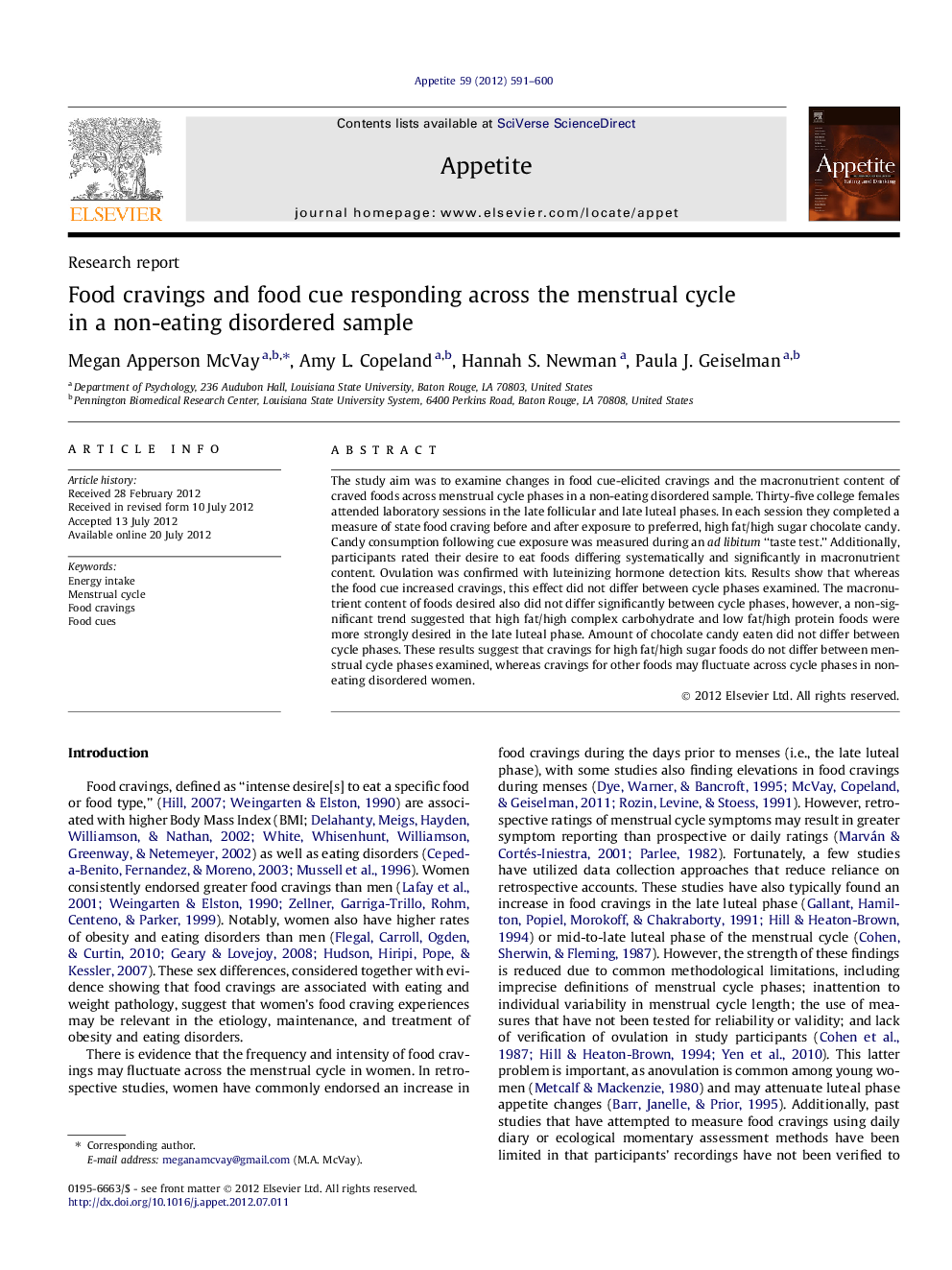| Article ID | Journal | Published Year | Pages | File Type |
|---|---|---|---|---|
| 939984 | Appetite | 2012 | 10 Pages |
The study aim was to examine changes in food cue-elicited cravings and the macronutrient content of craved foods across menstrual cycle phases in a non-eating disordered sample. Thirty-five college females attended laboratory sessions in the late follicular and late luteal phases. In each session they completed a measure of state food craving before and after exposure to preferred, high fat/high sugar chocolate candy. Candy consumption following cue exposure was measured during an ad libitum “taste test.” Additionally, participants rated their desire to eat foods differing systematically and significantly in macronutrient content. Ovulation was confirmed with luteinizing hormone detection kits. Results show that whereas the food cue increased cravings, this effect did not differ between cycle phases examined. The macronutrient content of foods desired also did not differ significantly between cycle phases, however, a non-significant trend suggested that high fat/high complex carbohydrate and low fat/high protein foods were more strongly desired in the late luteal phase. Amount of chocolate candy eaten did not differ between cycle phases. These results suggest that cravings for high fat/high sugar foods do not differ between menstrual cycle phases examined, whereas cravings for other foods may fluctuate across cycle phases in non-eating disordered women.
• Women were tested during late follicular and late luteal menstrual cycle phases. • Cue-elicited cravings for preferred chocolate candy did not differ between phases. • High fat/high complex carbohydrate foods may be desired more in late luteal phase. • Low fat/high protein foods may be desired more in late luteal phase. • Amount of chocolate candy eaten did not differ between cycle phases.
